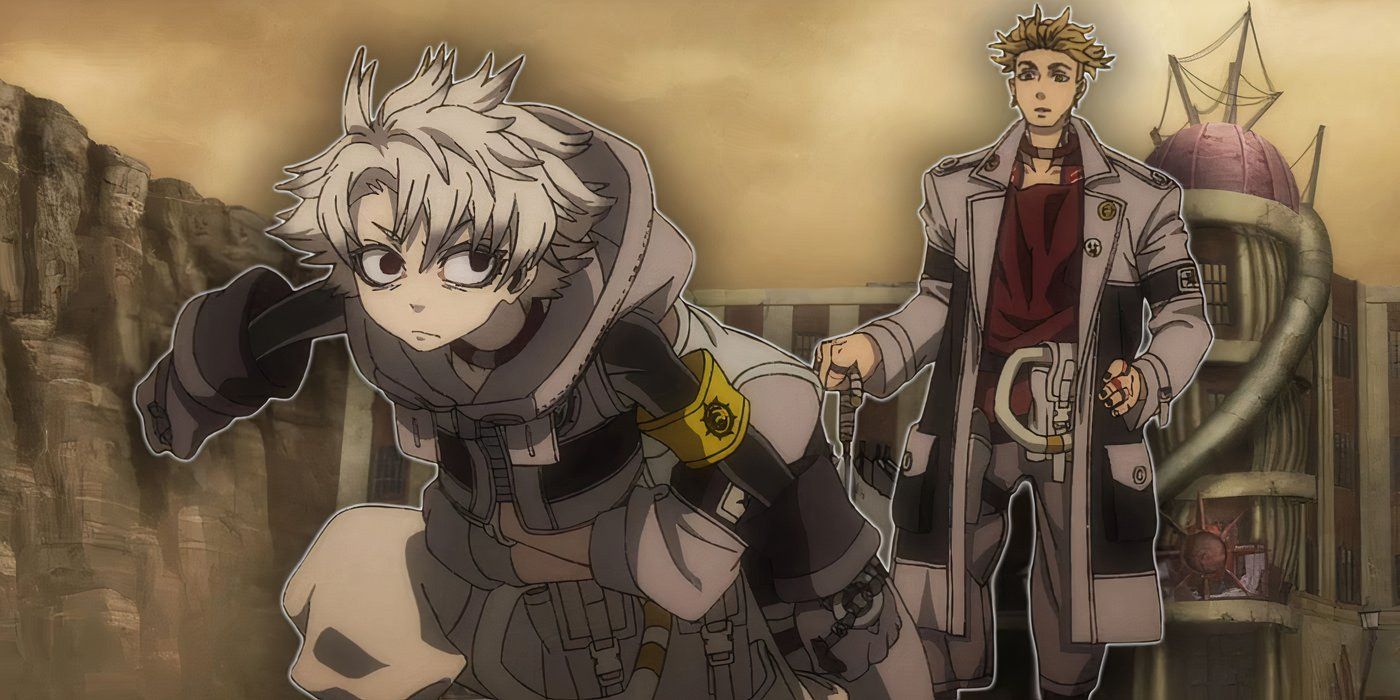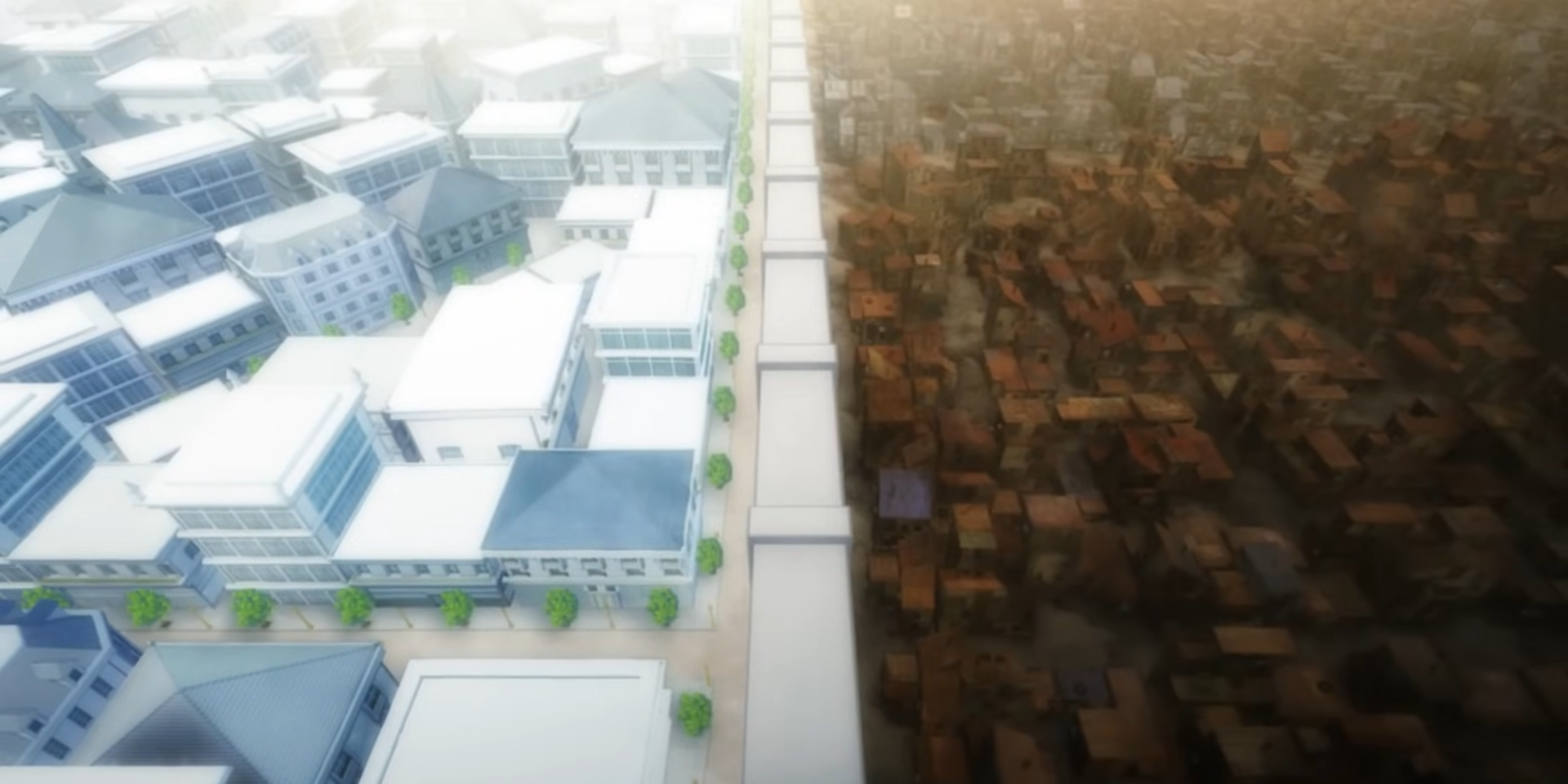
Many popular action anime feature heroes who overcome hardship through training and battles. However, the manga Undead Unluck takes a different approach. Its main character, Rudo, doesn’t start from a place of hope; he’s born into a world defined by waste and neglect. Created by Kei Urana, the story portrays trash not just as a physical environment, but as a core part of its society and its characters’ emotional burdens. Rudo is a hot-tempered boy living in the Lower District, where the wealthy discard both their garbage and those they deem undesirable. Wrongfully accused of a crime, he’s banished to the Abyss, a desolate wasteland filled with both physical and human refuse.
Watching Gachiakuta, I quickly realized it wasn’t just about getting revenge. It really made me think about what we choose to protect, and who gets left behind. The story, told through the character Rudo, felt like a raw look at the pain of being forgotten and the fierce determination to find meaning even when everything seems lost. Unlike a lot of modern manga heroes who represent hope, Rudo embodies resentment. His journey isn’t about being righteous or achieving justice; it’s simply about surviving and taking back what was stolen from him. He’s driven to prove that even those society deems worthless can have a purpose. And in doing so, Gachiakuta doesn’t just tell a story about trash; it feels like it’s redefining what shonen anime can even be.
Gachiakuta Redefines the Modern Anime Landscape




The worldbuilding in Gachiakuta is among the most compelling in recent anime. Society is sharply divided between the spotless Upper District, home to the wealthy and comfortable, and the bleak Lower District, where everything and everyone deemed undesirable is discarded. While this setup might seem like a typical class conflict, Kei Urana presents it as a deeper moral failing. The world operates on a principle of disposability—broken items, used goods, and even people are simply thrown away. This creates a society built on avoidance, where people maintain their comfort by ignoring the repercussions of overconsumption.
Visiting the Lower District felt like witnessing a strange contradiction. It was a place constantly falling apart, filled with decay, yet people still managed to live, even thrive within it. I saw residents piecing together a life from scraps, turning garbage into tools and, surprisingly, even art. It struck me that in Gachiakuta, trash wasn’t just waste; it spoke to the deep inequalities of the city. The wealthy seemed to hide behind polished surfaces, while those less fortunate literally breathed in the consequences of being ignored. This waste-based social structure gave Gachiakuta a unique, almost sad beauty – something you don’t often see in action-packed stories. The piles of garbage weren’t just an eyesore; they were a constant reminder of a world built on pretending things were okay when they clearly weren’t.
Each item in the junkyard hints at a past life – how it was used, what went wrong, and why someone decided it wasn’t worth saving. The setting constantly reminds us that Rudo and people like him don’t belong in the polished world above. While most action heroes strive for greatness and reach for the sky, Rudo’s path leads him further into darkness and ruin. But this isn’t a story of failure; it’s a journey of self-discovery. In a society obsessed with throwing things away, finding value in the forgotten and discarded is a powerful act of defiance.
Rudo Transforms Trash into Treasure
Rudo is a different kind of hero in today’s anime. Unlike many protagonists who strive to be kind and learn from their friends, Rudo isn’t focused on being ‘good.’ He’s blunt and forceful, tackling challenges with a fierce determination born from a tough upbringing. His anger feels justified because it’s rooted in a life where he was quickly dismissed and devalued. The anime Gachiakuta doesn’t portray his rage as something to fix, but rather as a way for him to fight back, protect himself, and prove his worth in a world that’s already given up on him.
Many stories celebrate calmness and discourage rebellion, but Rudo is different. He sees anger not as a weakness, but as a sign of emotional strength. When he acts on his anger, it becomes a force for good. This is perfectly represented by his ‘Vital Instruments’ – tools crafted from discarded materials and fueled by emotion. The symbolism is strong: Rudo creates weapons from trash, powerfully declaring that he and everything others have thrown away deserve to exist. His strength comes from giving value to the unwanted, a gritty and powerful heroism that feels very different from the typically clean and idealistic heroes found in most action anime.
Rudo’s bond with his adoptive father, Regto, adds another layer to his inner conflict. Regto was the only one who truly valued Rudo, and as a trash collector, he instilled in him the idea that everything has potential, even if it’s broken. This lesson became the foundation of Rudo’s beliefs. Rudo’s anger isn’t just rage; it’s grief expressed outwardly. He’s furious at a world that took away the one person who believed in him, and his outbursts always stem from a place of love and loss. Unlike many modern action anime where heroes are known for their restraint, Rudo’s story proposes that chaos and unpredictability can be genuine reactions to injustice.
Gachiakuta Takes a Firm Stance Against Waste
While many stories use trash to represent something unpleasant or morally wrong, Gachiakuta treats it as something sacred. The story explores how we decide what has value, and how subjective that process can be. In a world built on throwing things away, Gachiakuta asks a fundamental question: does something lose its worth simply because it’s discarded? The answer, consistently, is no. The “trash” in Gachiakuta isn’t just waste; it’s filled with memories, feelings, and untapped potential. Each discarded item retains a connection to its previous owner, and these connections are the source of the story’s powerful artifacts, known as Vital Instruments, which are central to the combat system.
I’m completely captivated by the idea behind Vital Instruments! It’s amazing to me how it shows that even things we discard can still have meaning, especially when you consider the story of Rudo. He’s been exiled to this place called the Abyss, which is essentially a junkyard given a second life. But it’s not just about trash; each discarded object holds a piece of its history – a broken knife might represent a broken trust, but a chipped toy still carries love. As a ‘Giver,’ Rudo doesn’t just use these remnants, he connects with them, becoming something of an artist and a spiritual guide. The combat isn’t about overpowering enemies; it’s about understanding the stories these objects hold and the emotions tied to them. It’s a system built on empathy, which is just…beautiful.
The anime Gachiakuta uses its fantastical world to comment on our culture of consumerism. Whenever the character Rudo builds something strong from broken items, the story subtly criticizes how quickly we discard both possessions and people. It suggests that throwing something away isn’t a simple act, and even blurs the line between objects and living beings. This makes Gachiakuta a thoughtful look at what we consume and the impact of our choices. Unlike many stories that celebrate making new things, Gachiakuta focuses on the power of repurposing and giving new life to what’s been discarded.
Gachiakuta Invents a New Kind of Shonen Anime Hero
Rudo is a refreshing addition to the anime and manga world, and feels like a deliberate departure from typical hero stories. While many recent protagonists, like Tanjiro and Deku, succeed by finding the best in people and acting with kindness and self-control, Rudo focuses on the darkness and fights through it, fueled by anger and a refusal to give up. He isn’t trying to rescue the world, but rather to make the world confront its own failings. This makes him a strikingly genuine and relatable hero for today’s audiences.
Rudo lives in a harsh world where being kind or showing weakness is met with negativity. Everything around him suggests he has no value, but he stubbornly rejects that idea. This struggle is similar to what characters like Shinji Ikari from Neon Genesis Evangelion and Eren Yeager from Attack on Titan experience – their suffering reflects the broken world around them. However, Rudo’s story feels more real and immediate. His world is gritty and unpleasant, and that realism makes his refusal to give up even more impactful.
Many anime heroes today are thoughtful or sarcastic, but Gachiakuta is different. It focuses on basic, physical struggles and doesn’t suggest that pain can simply be overcome. Instead, it shows that pain must be endured, like a heavy burden. Through its character Rudo, Gachiakuta reminds us that even in the most unpleasant circumstances, something valuable can still be found. He embodies the strong human desire to maintain pride and survive, even when faced with hardship and disrespect.
Read More
- Percy Jackson Season 2’s Tyson Explained: Everything You Need To Know About The Cyclops Character
- Золото прогноз
- Прогноз нефти
- Падение Bitcoin: Что вам нужно знать сейчас!
- 40-летний танец Bitcoin: Смешная долгосрочная ставка исполнительного директора.
- Провал XRP в ноябре: Крипто-клоун криптовалюты!
- Прогноз криптовалюты IP: прогнозы цены IP
- Supergirl Movie Will Clarify Superman 2025’s Most Controversial Retcon, Confirms Star
- Прогноз криптовалюты BNB: прогнозы цены BNB
- Доллар обгонит пакистанскую рупию? Эксперты раскрыли неожиданный сценарий
2025-10-31 16:43